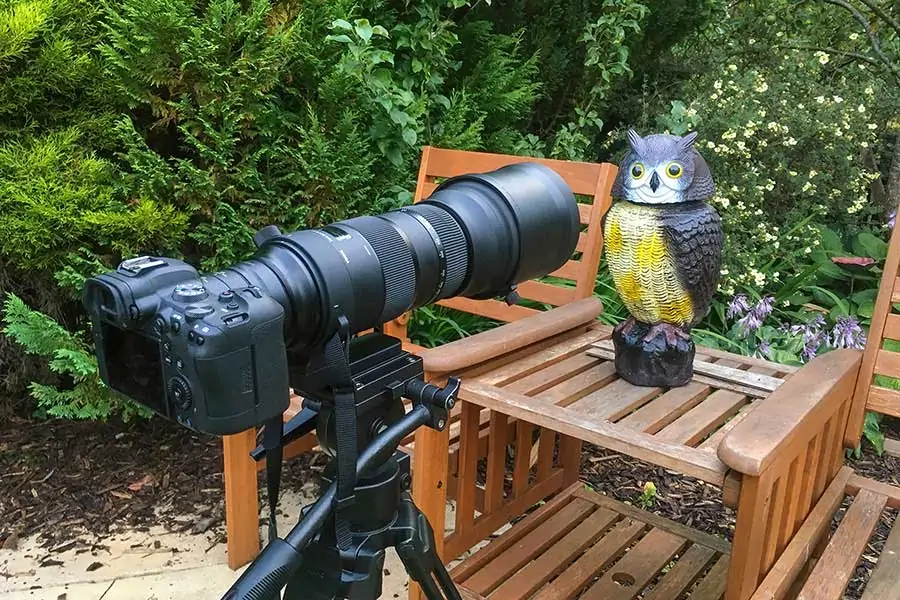DIY Video Studio is supported by its readers. Please assume links on this site are affiliate links or ads, and that I get commissions for purchases made through these links. As an Amazon Associate, I earn from qualifying purchases. Thank you if you use any of the links.
Can a Telephoto Lens be Used for Macro photography?
You can’t change the optics of the telephoto lens to change it into a macro lens but you can make it focus closer to the subject by using extension tubes. But will that get you close enough to reveal macro detail in your shots?
In this article I measure the real world Minimum Focusing Distance of a Sigma 150-600mm Sport lens when using JJC extension tubes at 22mm, 27mm, and 32mm to see if they can make a telephoto lens into a macro lens. At the end of this article I share several test images so you can decide if you can take macro shots with a telephoto lens.
All lenses have a minimum focus distance (MFD), which is the closest a lens can get to the subject and still focus. Usually, the MFD is available in the specifications or even printed on the lens barrel.
But if you add extension tubes to your lens the minimum focusing distance will become shorter and you won’t find any published data to tell you what it is. To find the MFD you have two options, you can calculate or measure it yourself.
I have done the measurement with my Sigma 150-600mm f/5-6.3 DG OS HSM Sports Lens when using 22mm, 27mm, and 32mm extension tubes. I will explain how I did it, give you the results in table and chart form, and show you some example photographs shot using extension tubes on this Sigma telephoto lens.
I would stress that these are real-world results with some inevitable error in the measurements, although I am confident the results are correct ±2cm.
How to Measure Minimum Focusing Distance of Sigma 150-600mm lens
So how do you measure the minimum focusing distance of a lens?
A quick warning. The focus distance is not measured from the front element of the lens. The distance is measured from the camera’s focal plane to the subject.
The position of the focal plane on a DSLR or mirrorless camera is shown on the camera body by a circle bisected by a straight line. In the following image of my EOS R6 you can see the symbol is just in front of the ON/OFF dial.
To measure the focusing distance correctly make sure you measure from this point and not the front of the lens.
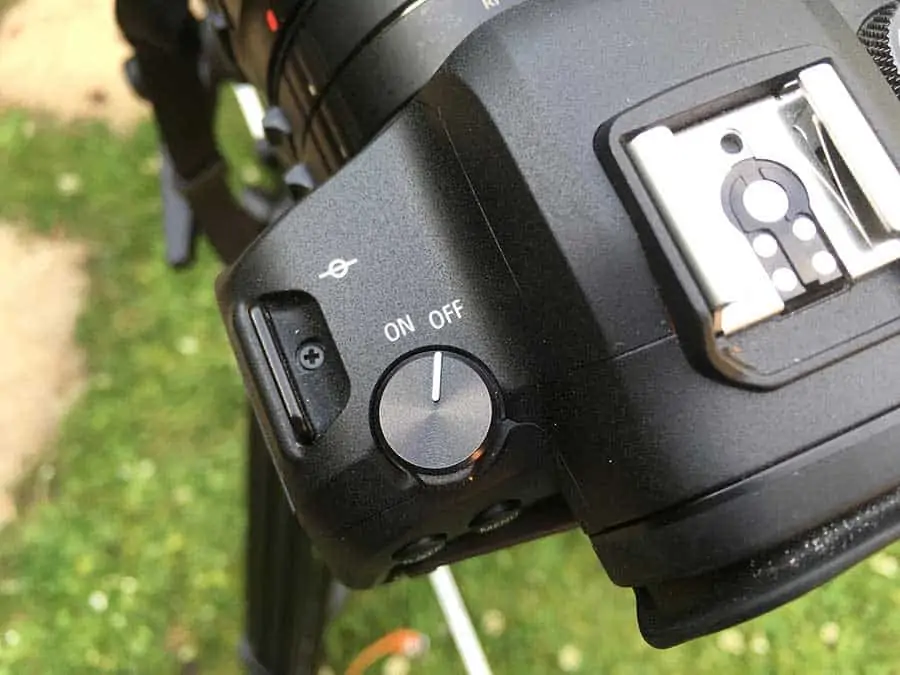
Focus Distance Test Setup
I used an owl bird scarer as my subject and laid a 25m tape measure on the ground. The camera and lens were mounted on a tripod that straddled the tape measure, with the height adjusted so the lens and subject were at the same height.
Once the focus distance was found, a plumb line was dropped from the camera’s focal plane marker to the tape measure, as shown in this image.
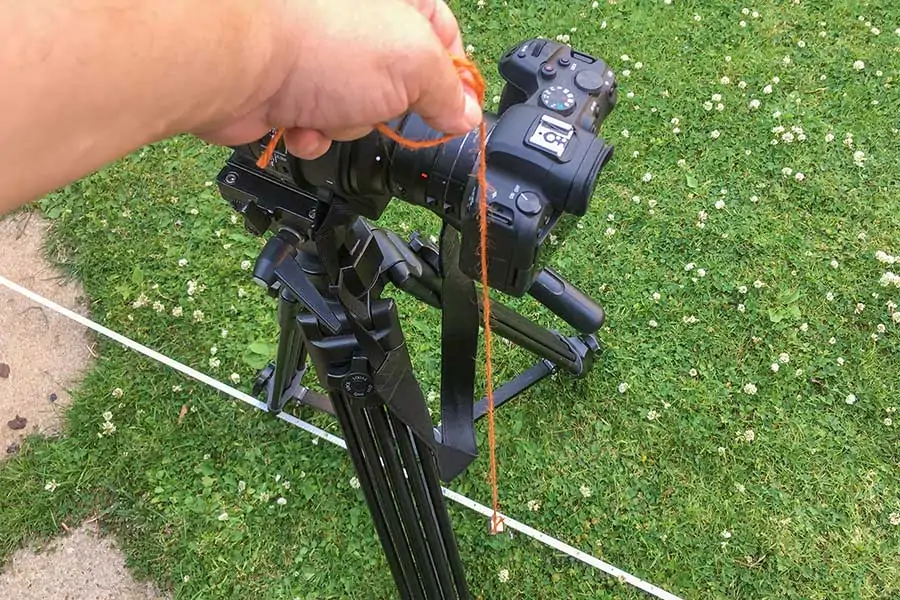
The measurements were repeated using three extension tubes, 22mm, 27mm, and 32mm.
The measured distances are shown in the tables below, along with charts showing the data in graphical form.
The Test Results
The addition of extension tubes to the Sigma 100-600mm Sport lens reduced the minimum focusing distance rather more than I expected at one end of the focal length range than the other. Here are my results.
Sigma 150-600mm Sport Minimum Focusing Distance with 22mm, 27mm, and 32mm Extension Tubes
| Focal Length | 22mm Ext. Tube | 27mm Ext. Tube | 32mm Ext. Tube |
|---|---|---|---|
| 150mm | 0.98m | 0.91m | 0.85m |
| 200mm | 1.24m | 1.17m | 1.09m |
| 300mm | 1.67m | 1.60m | 1.50m |
| 400mm | 1.98m | 1.90m | 1.85m |
| 500mm | 2.17m | 2.12m | 2.06m |
| 600mm | 2.3m | 2.24m | 2.15m |
Here is the MFD data from usng the three extension tube lengths plotted against focal length
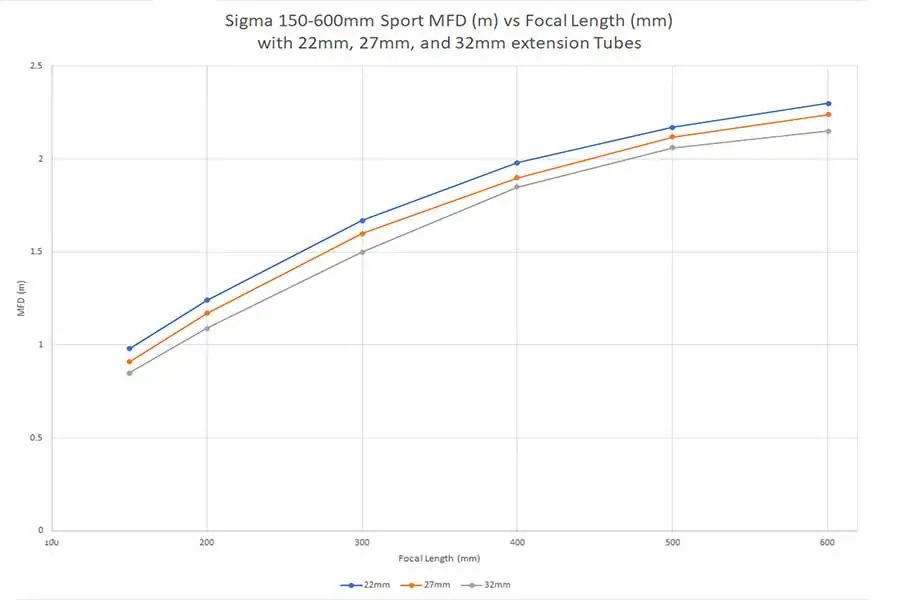
Conclusions based on the test results
We can make a few observations based on the test results.
Measured Minimum Focusing Distances is similar when using different size extension tubes
The lens specification for the 150-60mm Sport lens from Sigma says the minimum focusing distance is 2.6m. There is no mention of any variation across the focal length range. But in my test, once extension tubes are attached, the minimum focusing distance does change with the focal length of the lens.
The relationship between focal length and minimum focusing distance is a gently flattening curve that looks similar for each length of the extension tubes tested. Naturally, the data points on the curves have different values.
At the same focal length of the lens, no matter which extension tube was used, the recorded minimum focusing distances were within 10-15cm of each other. For example, at a focal length of 150mm the minimum focusing distance was 0.98m, 0.91m, and 0.85m with extension tube lengths of 22mm, 27mm, and 32mm respectively. So, at that focal length, you could say the minimum focusing distance is approximately 90cm, irrespective of which extension tube is used.
Taking an average of the MFD at each focal length lets us create the next table for the Sigma 150-600mm lens and these extension tubes.
The average distance is close enough to the actual figure that it is a good enough starting point for any of these extension tubes when getting the camera and lens into position to shoot a close-up shot. Any necessary position adjustments will involve moving no more than 15cm (6-inches). I would say that in the context of a telephoto lens that 15cm is relatively inconsequential, obviously for a macro lens 15cm may seem massive. However, this article is about the Sigma 150-600mm Sport.
| Lens focal length | Average Minimum Focusing Distance for 22mm, 27mm, and 32mm extension tunes |
|---|---|
| 150mm | 0.91m |
| 200mm | 1.16m |
| 300mm | 1.59m |
| 400mm | 1.91m |
| 500mm | 2.12m |
| 600mm | 2.23m |
However, across the whole focal length range of the Sigma lens, the minimum focusing distance changed from just under a meter to about 2.2m, a difference of 1.3m.
MFD Calculators do not always match real world results
The trouble with the online calculators is that they are based on the “thin lens equation”. However, the Sigma lens has many lens elements, and their relative positions will shift as the lens focuses. Put plainly, the simple lens equation does not take into account the design complexities of lenses like the Sigma 150-600mm Sport. At best, the calculators are a best guess.
If you want to know the new MFD of your lens after adding an extension tube, your best bet is to test the combination yourself.
Adding Extension Tubes Does Not Make the Signa 150-600mm a Macro Lens
Here are two shots of my “pet” owl (actually a bird scarer we put up in our backyard). Both shots were taken at the minimum focusing distance of the Sigma 150-600mm lens @150mm, but you can see they look very different. On the left the image was shot with the bare lens, on the right an extension tube has been fixed between the lens and my EOS R6 camera body. There’s certainly plenty more magnification, but does this result turn the Sigma telephoto into a macro lens?
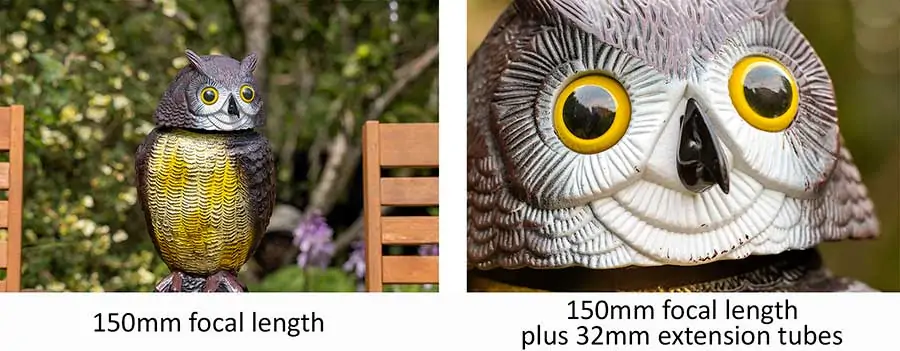
True macro lenses are designed to focus closer than regular lenses and have a 1:1 magnification. That means that the size of the image on the sensor is the same size as the subject. Clearly the Sigma, even with the extension tubes does not fall in the category of a macro lens.
Dedicated macro lenses are expensive because their optics have been optimized for shooting subjects at short distances, while most ordinary lenses are not optimized in the same way. However, the Sigma lens is not an ordinary lens. For a start, the optics must be incredibly good to produce sharp images at long focal lengths.
So, while the Sigma telephoto may not be a macro lens, the image quality with the added extension tubes is excellent. With more time and practice my “macro snaps” in the garden would look a great deal better.
How could they be better? For a start, I would have put the lens on a tripod (just as in my MFD tests). At 6.3lbs, not including the camera and extension tubes, this lens is a heavy brute to handhold and keep still. A faster shutter speed and remote shutter control would also help keep the images sharper.
Finally, the depth of field needs addressing. I left the aperture wide open, so stopping down would help. I could also use the automatic focus bracketing feature of my R6 and then use Photoshop to blend the in-focus parts of the images together for a wider depth of field. I would also point out that adding extension tubes reduces the lens speed, although the camera won’t tell you what true f-number you are shooting at because the extension tube is effectively invisible to the camera. If you’re shooting in auto the camera will compensate for the darker image but it is something to be aware of when shooting in manual.
Nonetheless, putting extension tubes on this super-telephoto lens does allow close-up photography that looks remarkedly good, especially at the 150mm end of the focal length range, where the magnification is a maximum.
Example photos shot with extension tubes on Sigma 150-600mm Sport at new MFD
The following images were all taken with a Canon EOS R6 using a Sigma 150-600mm Sport super-telephoto lens with two sets of JJC automatic extension tubes (11mm+11mm+16mm+16mm), giving a total extension tube length of 54mm.






Tosh Lubek runs an audio and video production business in the UK and has been using the Canon EOS R since it was released in the Autumn of 2018 and the Canon EOS R6 in 2020. He has used both cameras to shoot TV commercials broadcast on Sky TV, promotional business videos, videos of events and functions, and YouTube creator content. He has also won several international awards for his advertising and promotional work. You can meet him by visiting his “video booth” at HashTag Business Events across the country.
Recent Posts
Most people use sandbags the wrong way. Here’s how to hang them properly on a light stand for maximum stability and safety — plus what to fill them with.
You're Using the Canon RF 50mm f/1.8 WRONG! Here’s How to Fix It
If you’ve recently picked up the Canon RF 50mm f/1.8 STM—affectionately known as the Nifty Fifty—you might be confused by that strange switch on the side of the lens. It doesn’t say AF/MF...


